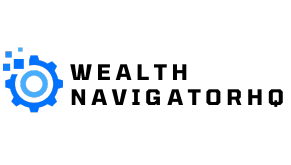Table of Contents
ToggleIn a world where pajamas have become the new business casual, staying productive remotely can feel like a high-stakes game of hide-and-seek. Between the couch calling your name and the fridge whispering sweet nothings, it’s easy to lose focus. But fear not! Mastering the art of remote productivity isn’t just a dream; it’s a skill anyone can learn—even if that skill involves dodging snack breaks like a pro.
Imagine transforming your home into a productivity powerhouse, where distractions are mere background noise and your to-do list gets tackled with the ferocity of a caffeinated squirrel. With the right strategies, anyone can turn their living room into a bustling office. Get ready to unlock the secrets of remote work success and wave goodbye to procrastination—because who said working from home can’t be both fun and effective?
Tips to Stay Productive Remotely
Creating effective remote work habits involves specific strategies. Implementing these tips can enhance focus and efficiency.
Establish a Dedicated Workspace
Designating an area solely for work improves concentration. Choose a location free from distractions, such as the living room or kitchen. This space should contain all necessary tools: computer, notepad, and office supplies. Ergonomic furniture contributes to comfort, which boosts productivity. Personalizing the workspace with motivational elements can also reinforce a positive mindset.
Set Clear Work Hours
Defining work hours sets boundaries that separate personal life from professional commitments. Determine specific start and end times for each workday. Communicating these hours with colleagues promotes accountability and collaboration. Incorporate scheduled breaks into the day, allowing for rest and rejuvenation. Sticking to this routine enhances overall productivity and mental well-being.
Tools and Technologies for Remote Productivity

Remote productivity relies heavily on the right tools and technologies. Selecting effective resources can lead to enhanced efficiency and collaboration.
Project Management Software
Project management software streamlines tasks, deadlines, and team collaboration. Popular options like Trello or Asana help organize tasks visually, making it easier to track progress. These tools enable team members to assign tasks, set due dates, and monitor project timelines. Features such as commenting and file attachments facilitate communication, ensuring everyone stays informed. Implementing such platforms helps remote teams stay aligned and accountable.
Communication Tools
Communication tools are essential for maintaining connectivity among remote workers. Applications like Slack or Microsoft Teams support real-time messaging and video calls. These platforms allow for instant updates, making discussions more efficient. Channels or team spaces can be created for specific projects, promoting organized conversations. Additionally, integrating these tools with project management software enhances workflow and reduces misunderstandings. Adopting reliable communication methods fosters a collaborative environment, essential for remote productivity.
Maintaining Work-Life Balance
Maintaining a healthy work-life balance is crucial for remote productivity. Establishing clear boundaries and incorporating regular breaks significantly enhances focus and well-being.
Setting Boundaries with Family
Family members may not always understand professional commitments. It’s essential to communicate specific work hours to minimize distractions. This clarity sets realistic expectations about availability during work time. Encouraging family members to respect the workspace helps create a distraction-free environment. Designating a separate area for work further reinforces this boundary. Involving family in discussions about work-life balance nurtures mutual respect and support. Prioritizing focused work periods leads to increased efficiency and job satisfaction.
Taking Regular Breaks
Taking regular breaks boosts mental clarity and productivity. Scheduled intervals for relaxation recharge energy levels. Short, frequent breaks can enhance focus and ward off burnout. Stepping away from the screen provides a fresh perspective on tasks. Engaging in physical activities or mindfulness exercises offers additional benefits. Implementing a timer can help maintain a structured break schedule. Each pause contributes to better concentration when returning to work. Overall, prioritizing breaks establishes a healthier routine that ultimately improves overall performance.
Strategies for Focusing at Home
Staying focused while working remotely requires intentional strategies to minimize distractions and manage time effectively.
Minimizing Distractions
Creating a distraction-free environment plays a crucial role in enhancing focus. Designate a specific area in the home for work, separate from leisure spaces like the couch or kitchen. Removing potential distractions such as mobile devices or TV can significantly improve concentration. Utilizing noise-canceling headphones or playing instrumental music might also help in maintaining focus. Communicating with family members about work hours further reduces interruptions, setting clear expectations about availability. Establishing these boundaries contributes significantly to productivity and helps maintain a professional mindset while in a home setting.
Using Time-Blocking Techniques
Implementing time-blocking techniques can enhance productivity during remote work. Allocating specific time slots for tasks creates a structured workday, reducing procrastination. Each block should focus on one particular task, allowing for deep concentration and efficiency. Designating breaks between blocks offers opportunities to recharge and prevent burnout. Tools like digital calendars can efficiently manage time blocks, making adjustments easier as necessary. Keeping track of progress throughout the day motivates individuals to stay on task. Adopting this approach fosters a disciplined work schedule, enhancing overall productivity in a home environment.
Mastering remote productivity is achievable with the right strategies and mindset. By creating a dedicated workspace and setting clear boundaries, individuals can minimize distractions and enhance focus. Utilizing effective tools and technologies fosters collaboration and streamlines tasks, making remote work more efficient.
Regular breaks are essential for maintaining mental clarity and preventing burnout. Engaging in physical activities or mindfulness exercises during these breaks can further boost productivity. With a commitment to developing strong remote work habits, anyone can transform their home environment into a thriving workspace that promotes both efficiency and job satisfaction. Embracing these practices will lead to a more balanced and productive remote work experience.







